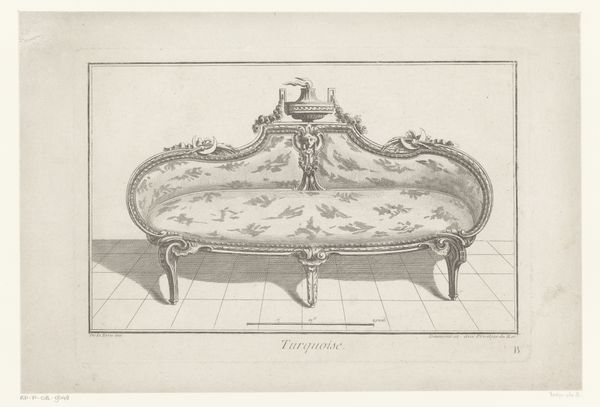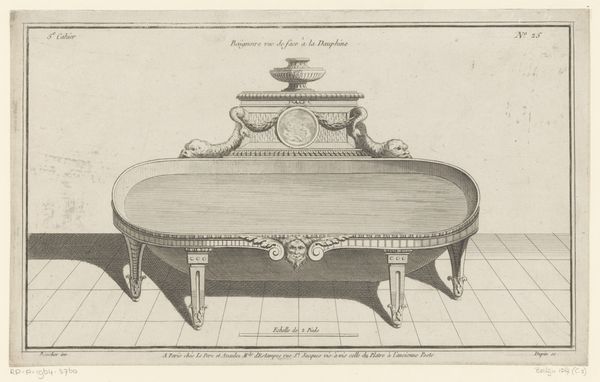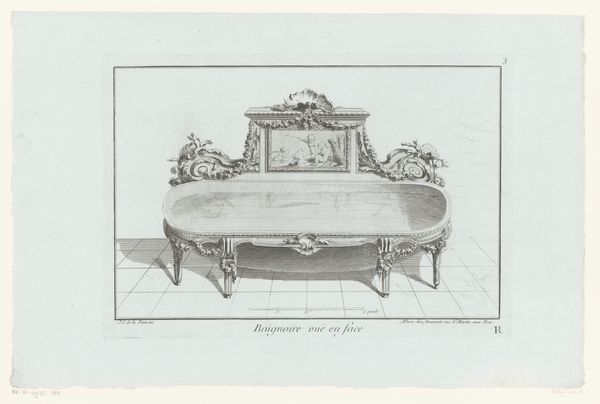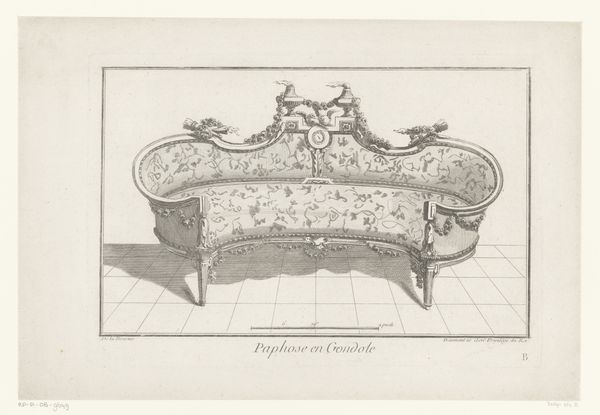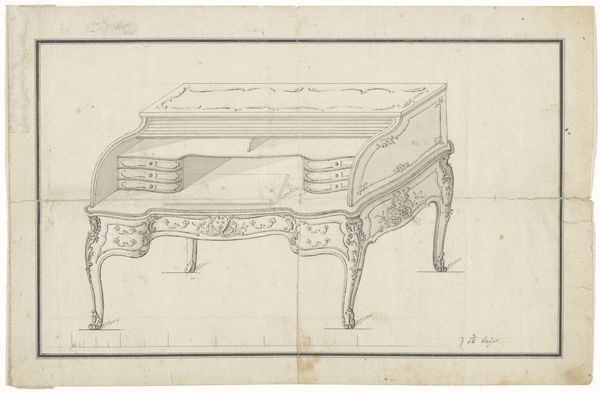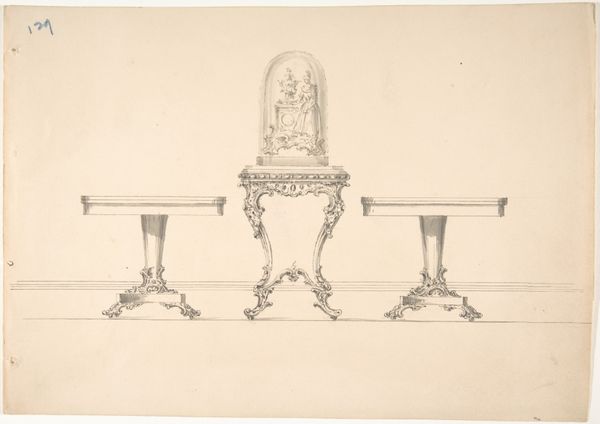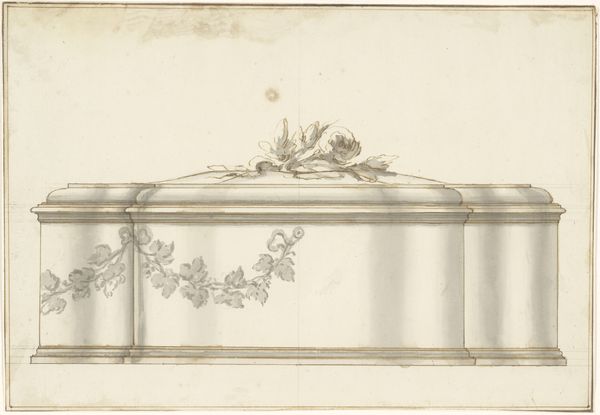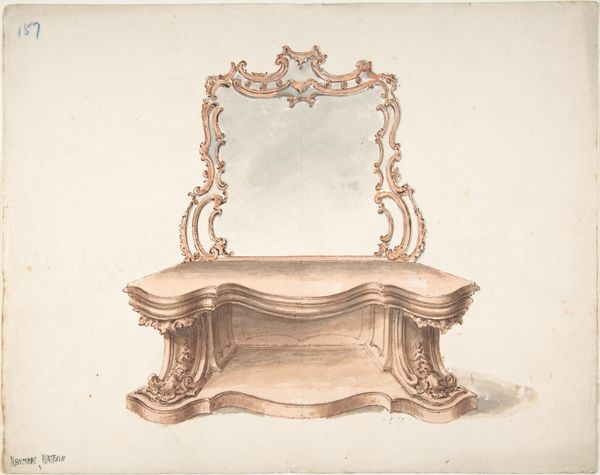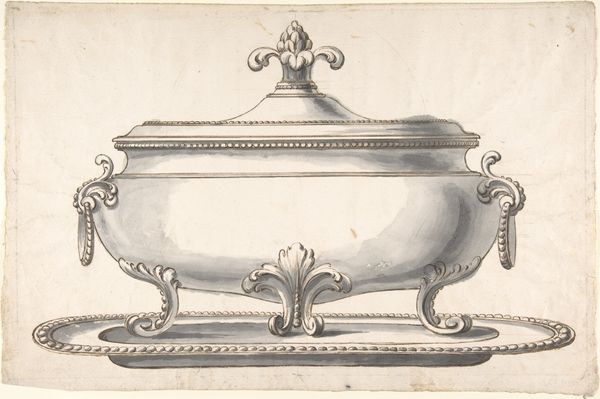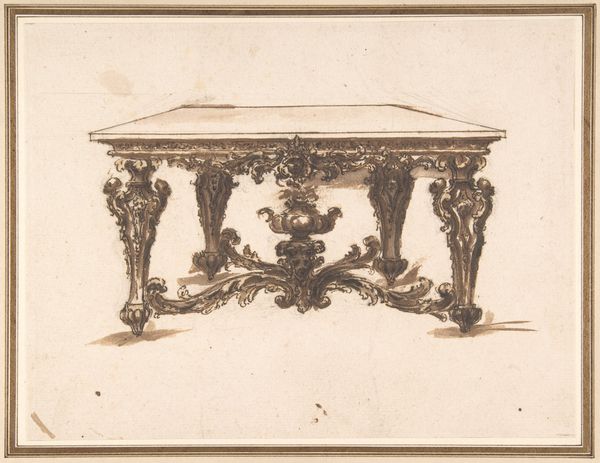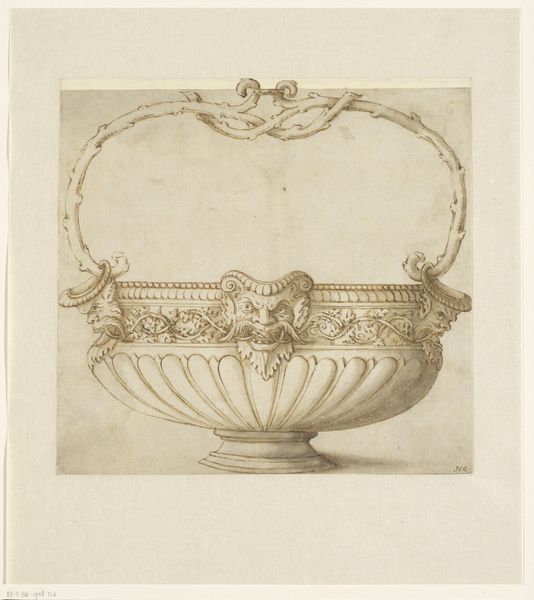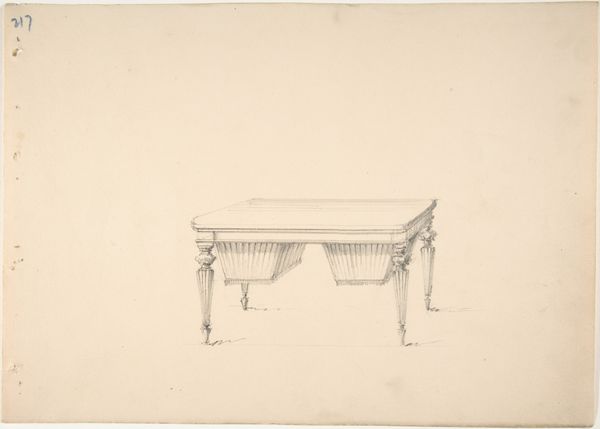
drawing, print, pencil
#
drawing
#
neoclacissism
# print
#
pencil drawing
#
pencil
#
decorative-art
Dimensions: 10 5/16 x 16 1/16 in. (26.2 x 40.8 cm)
Copyright: Public Domain
Curator: The elegance is palpable, isn’t it? It almost feels…weighty, somehow. Editor: This pencil drawing offers a glimpse into the neoclassical style of Henri Auguste, who sketched this design for a covered footed serving dish sometime between 1770 and 1816. It resides at The Met. Curator: Right. Notice the lion's paw feet. These, along with the lion heads integrated into the support structure and the guilloche pattern near the rim, all tap into potent symbols of power, protection, and eternal return, wouldn't you say? Editor: Absolutely, but let's think critically about who this dish was *for*. Who was being served? The lion imagery and precious material served to amplify existing social hierarchies. It speaks to a lavish lifestyle predicated on unequal access. Curator: Yet the universality of classical symbols remains. A symbol survives for centuries because its meaning is fluid and layered. It can signify status *and* protection, luxury *and* artistry. A double-edged meaning persists. Editor: That may be true, yet in the context of revolutionary upheaval, particularly in France at the time, designs like these acquired a politically charged connotation as emblems of aristocracy. It isn't just pretty. It makes claims about societal structures. Curator: But doesn’t the enduring presence of these motifs indicate more than just an imposition of class? Perhaps, despite the overt intention of the commissioner, there exists something inherently pleasing in symmetry and repetition which is beyond class divisions. Editor: Interesting point! It is essential to examine how the aesthetics of such designs can outlive their original contexts, even finding new subversive and progressive meanings down the line through reimagining and recontextualization. Curator: Looking at it now, I'm struck again by its pristine balance. A moment of potential tension and inequality, distilled into serene art, continues to generate discourse. Editor: For me, seeing designs like this prompts questions about privilege and dispossession. We inherit history visually, and must actively think about whose narratives become visually represented.
Comments
No comments
Be the first to comment and join the conversation on the ultimate creative platform.
